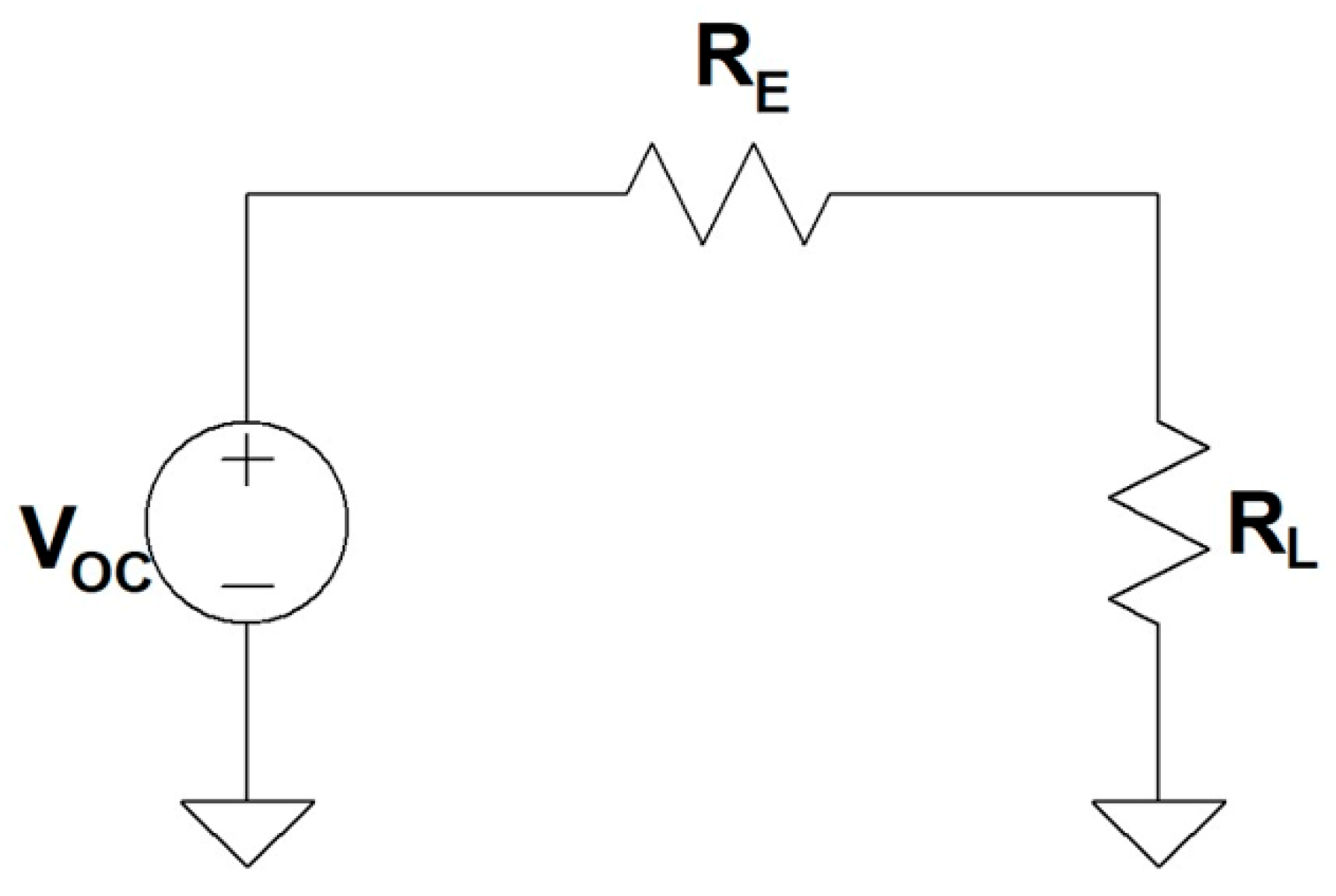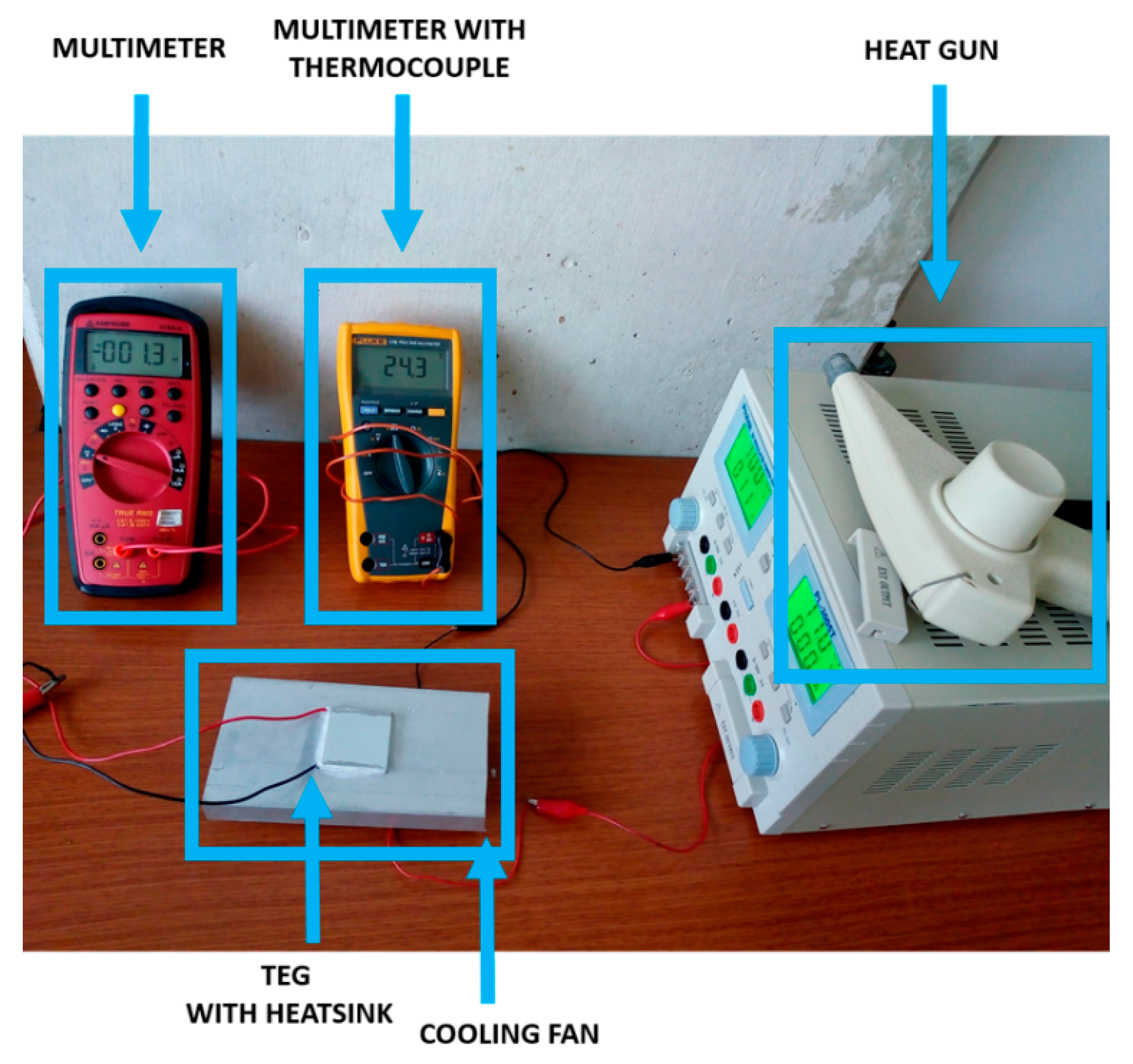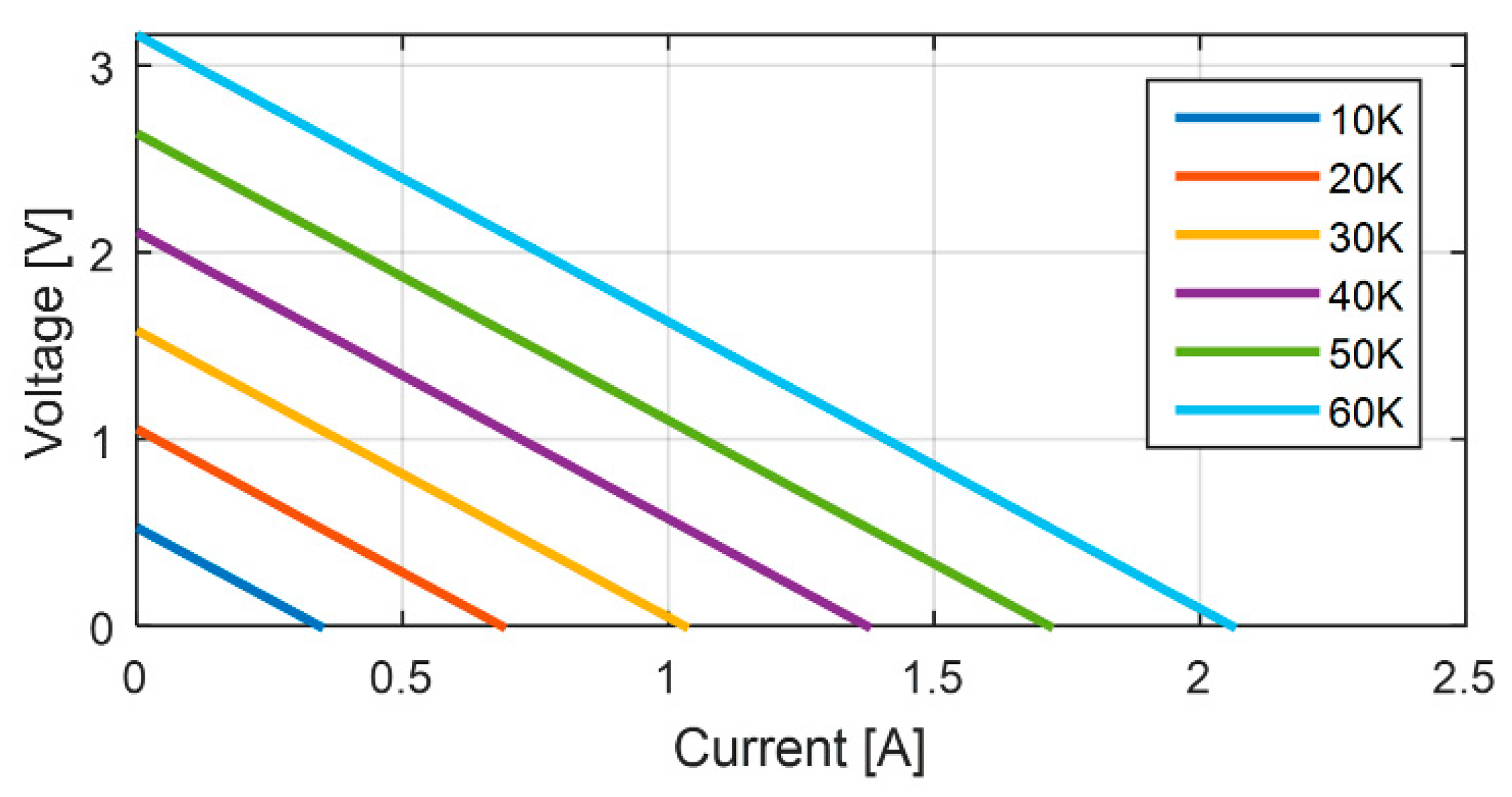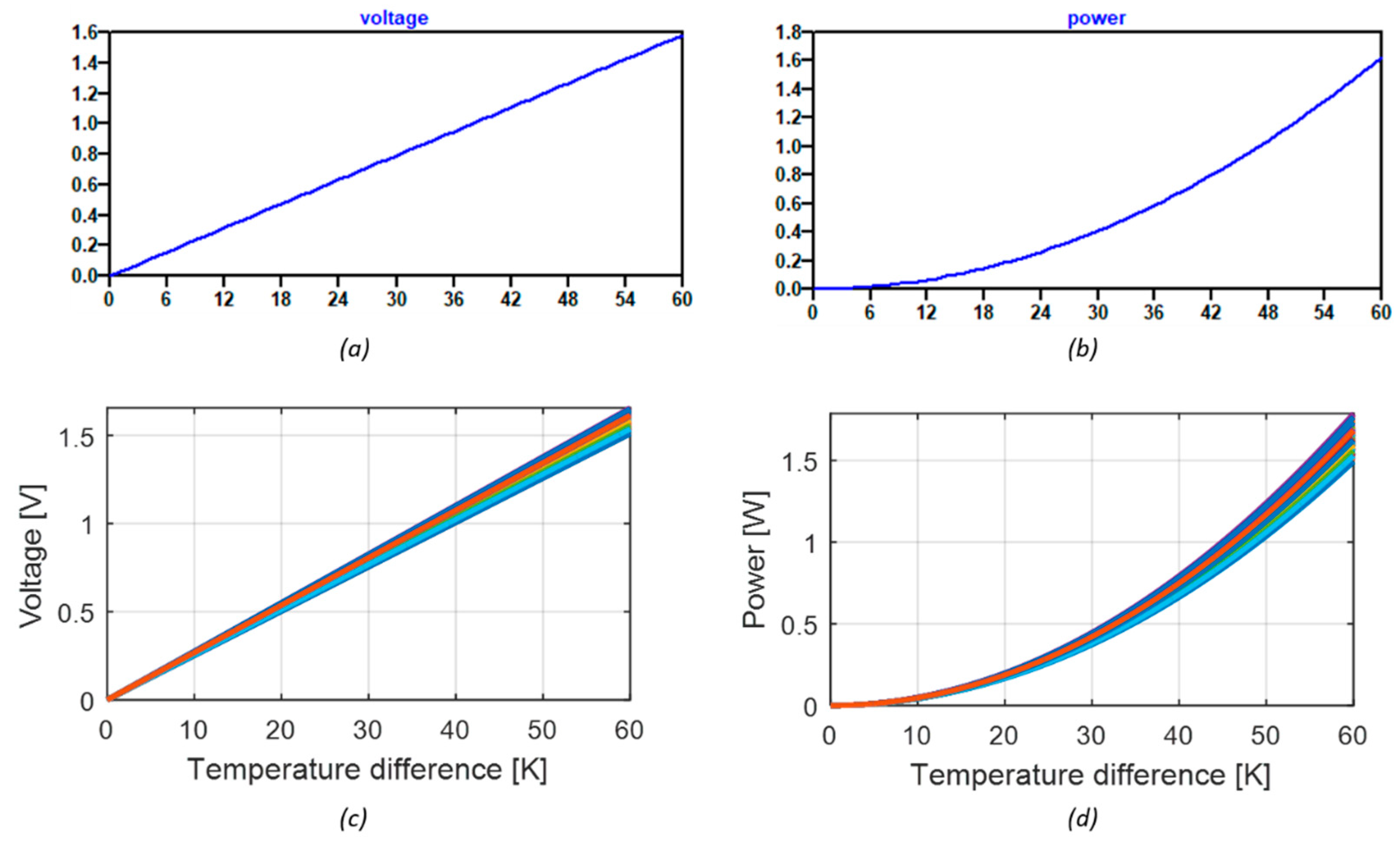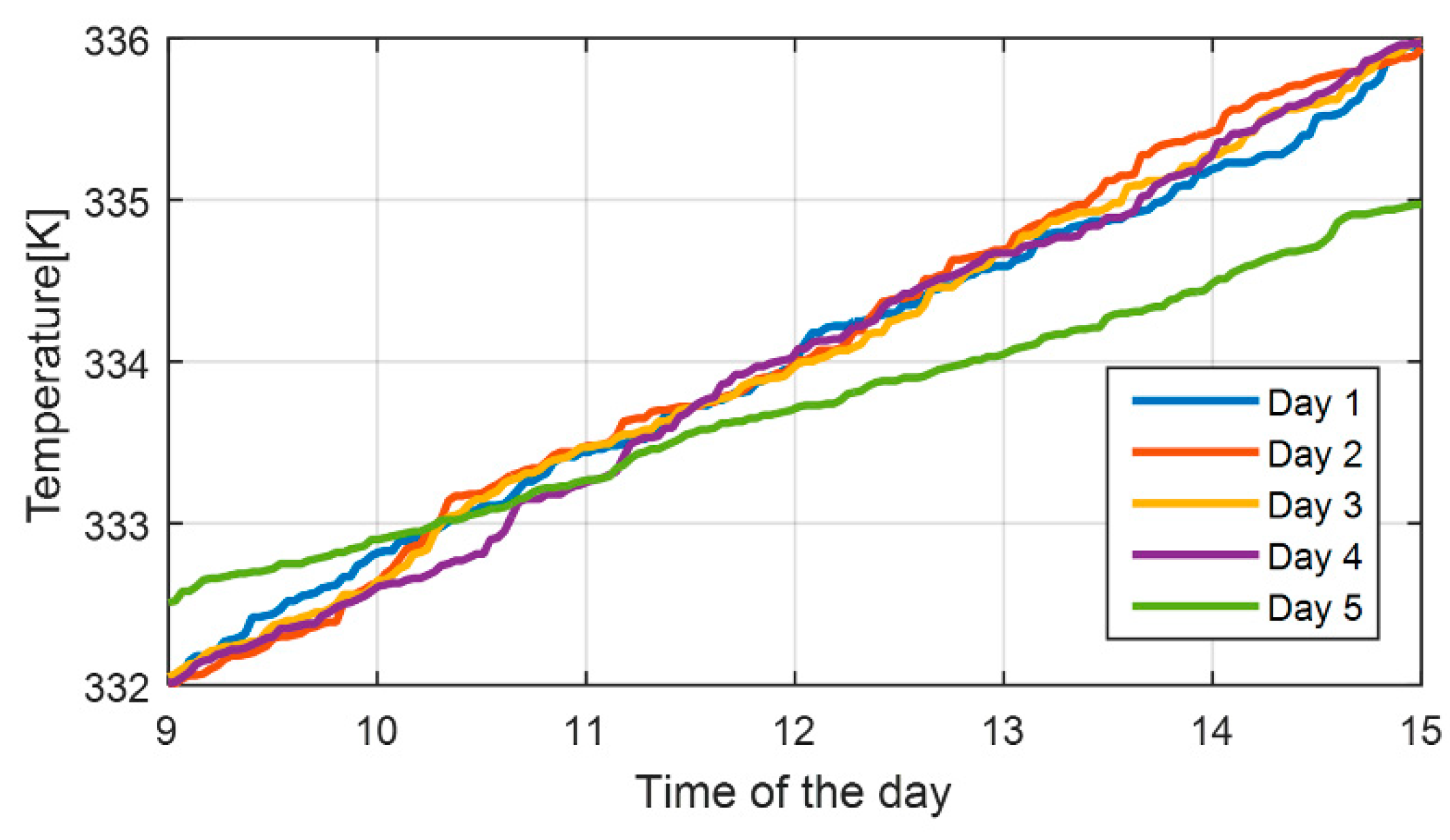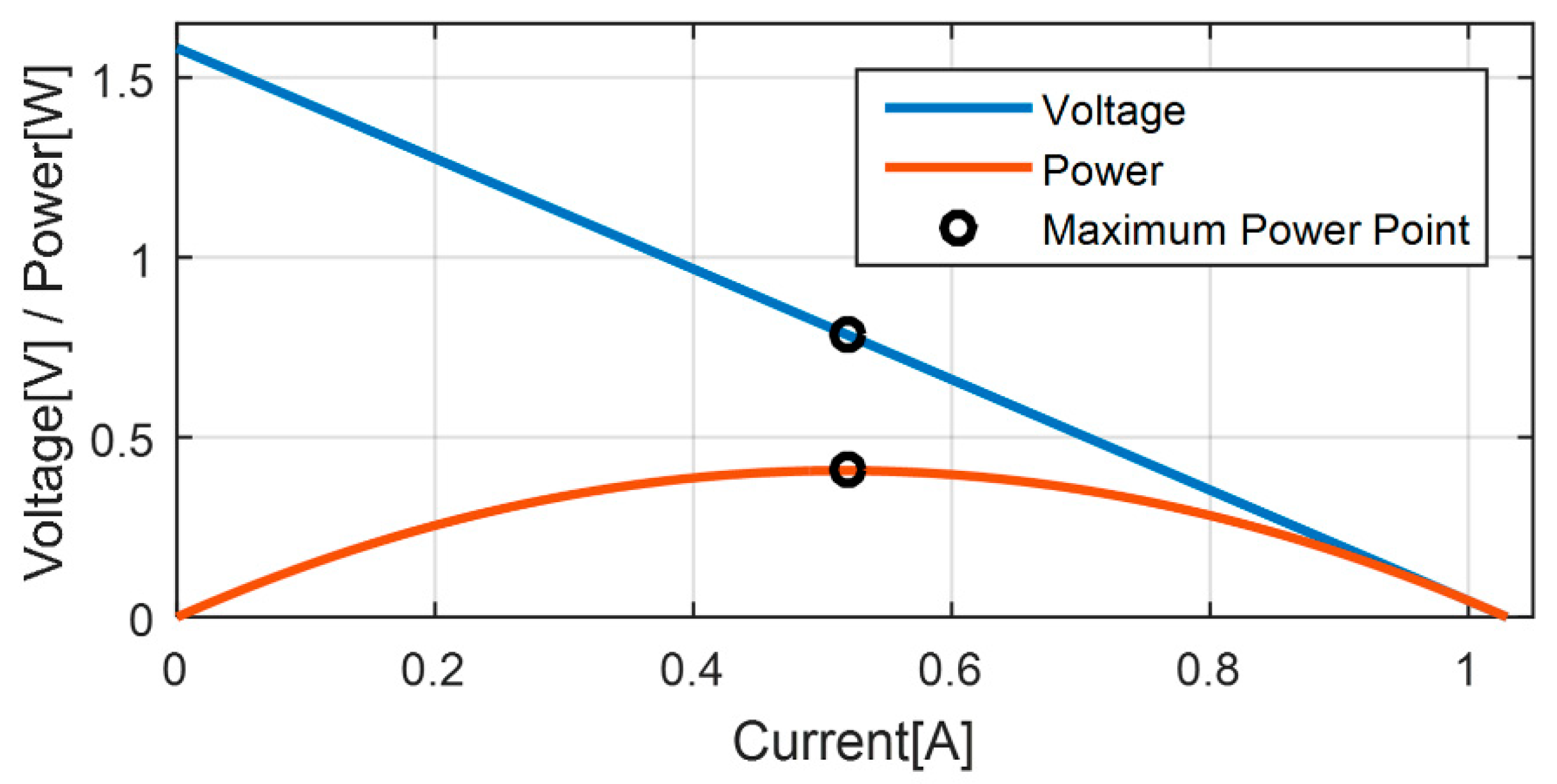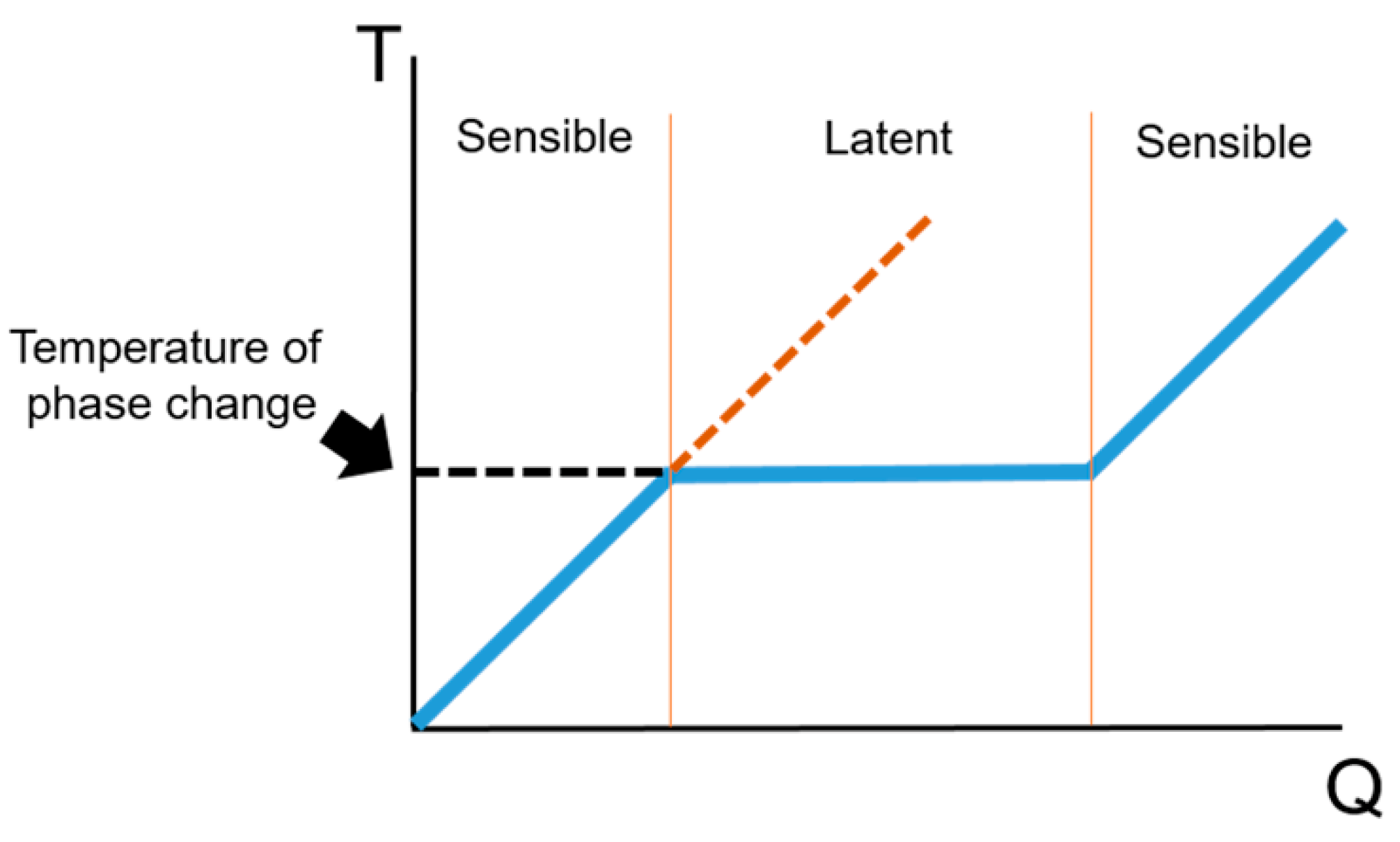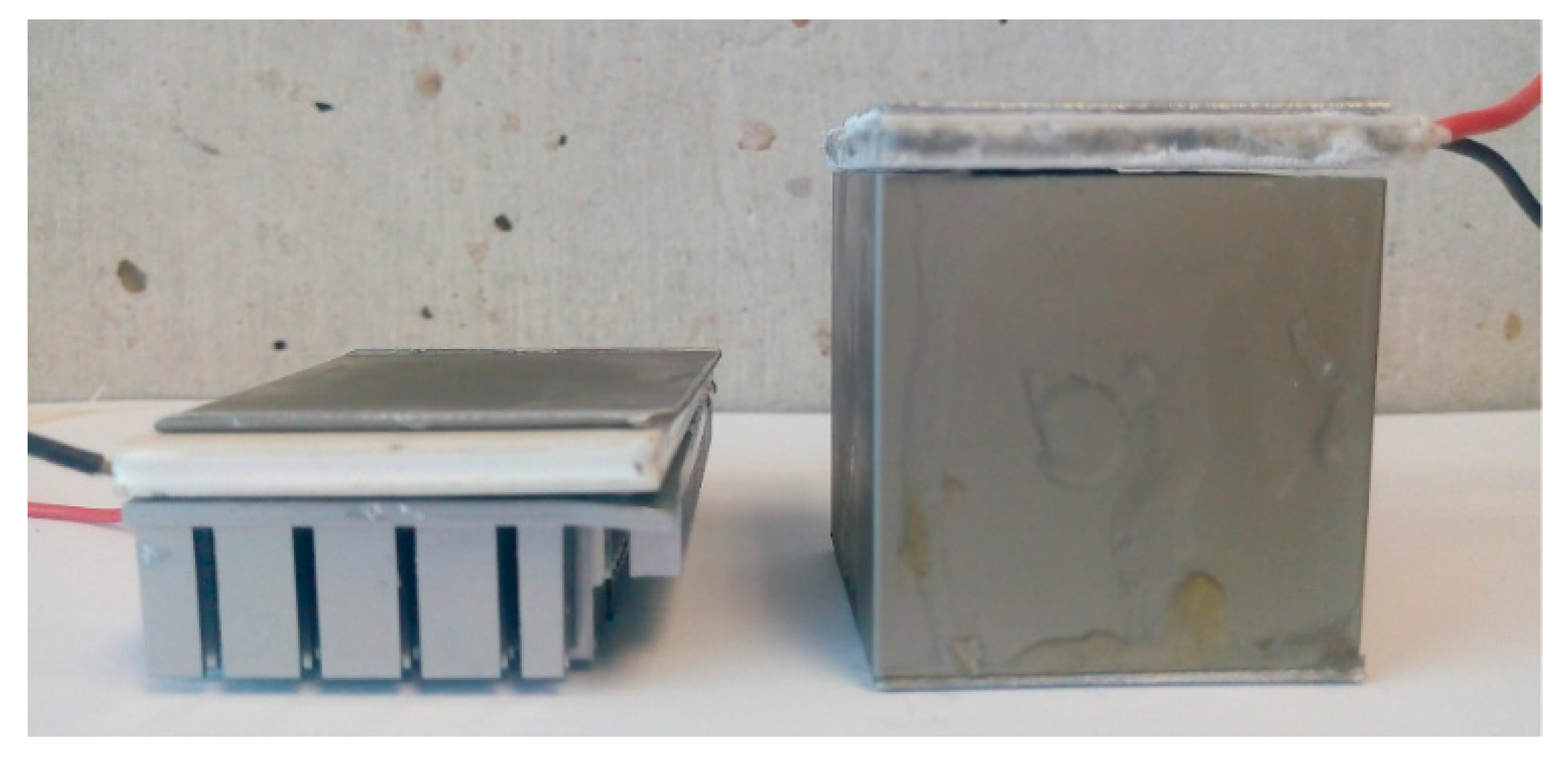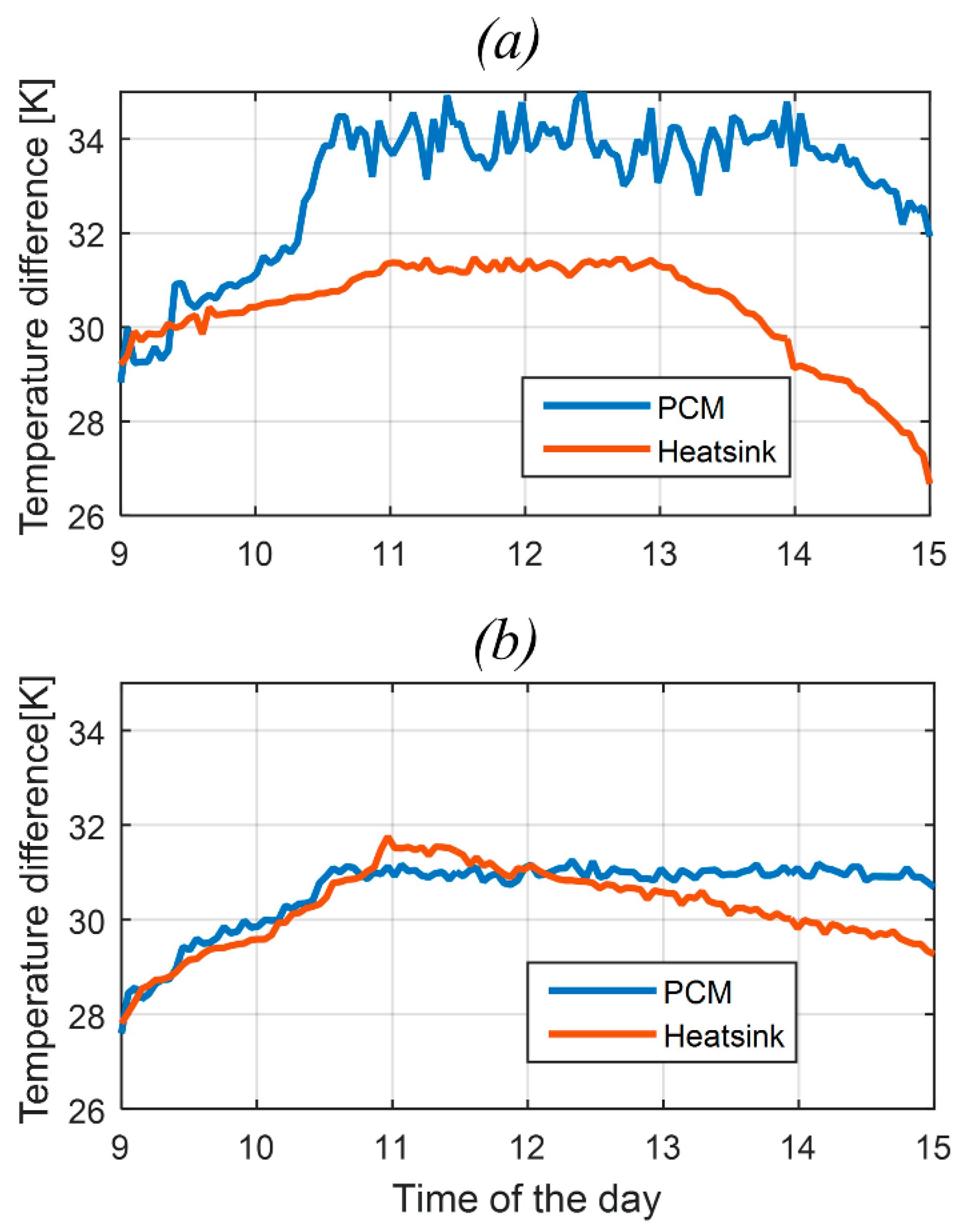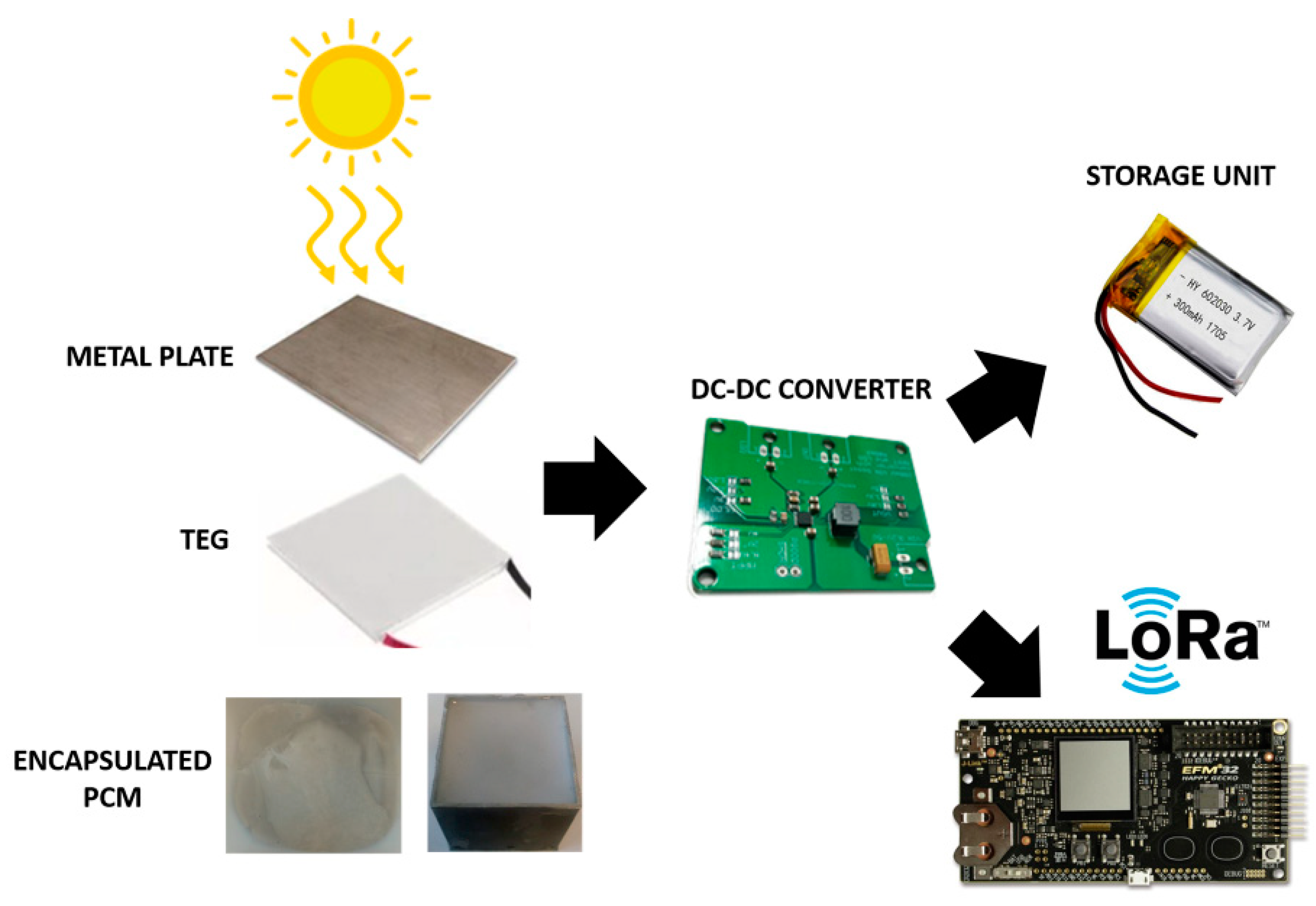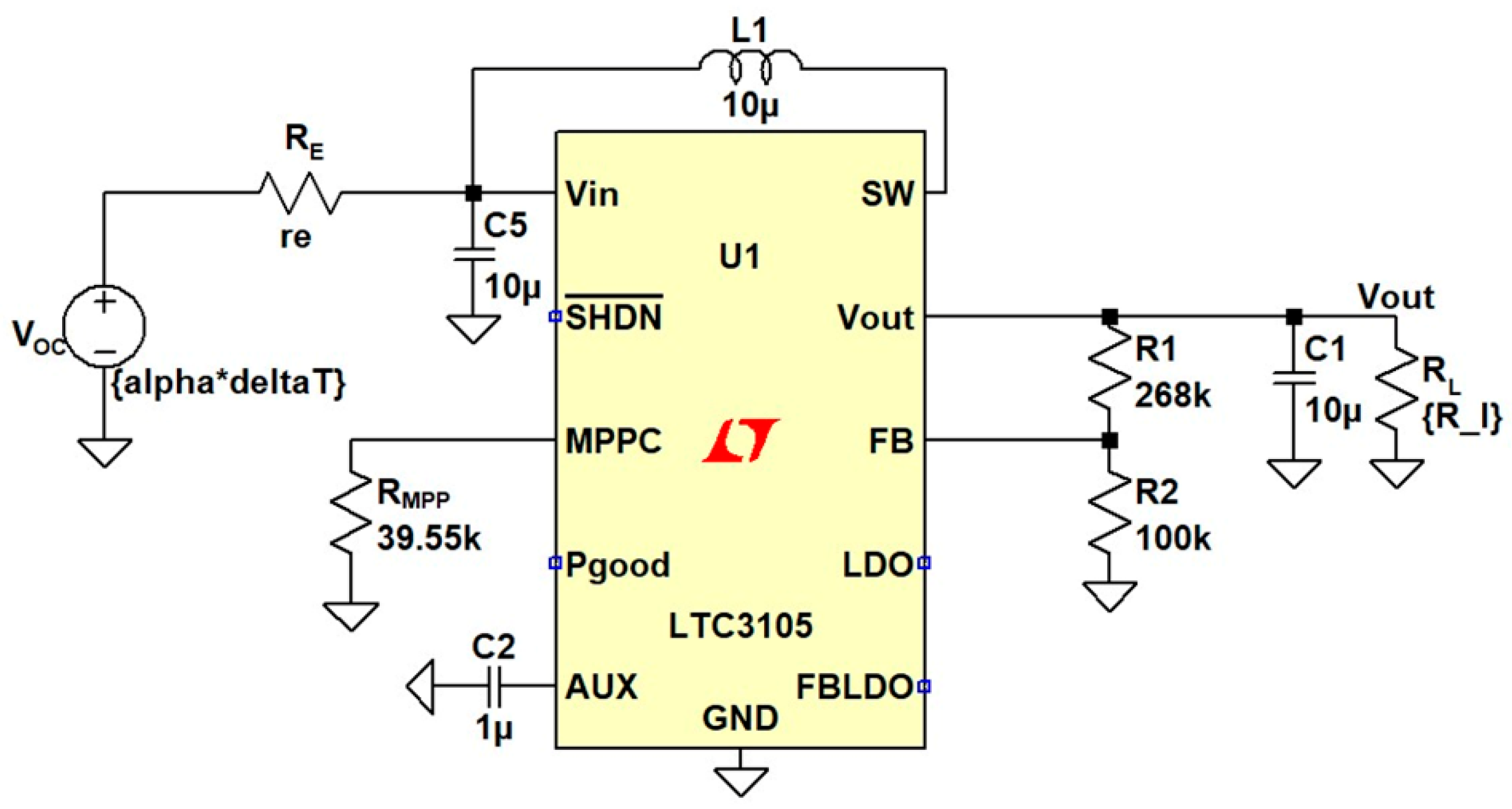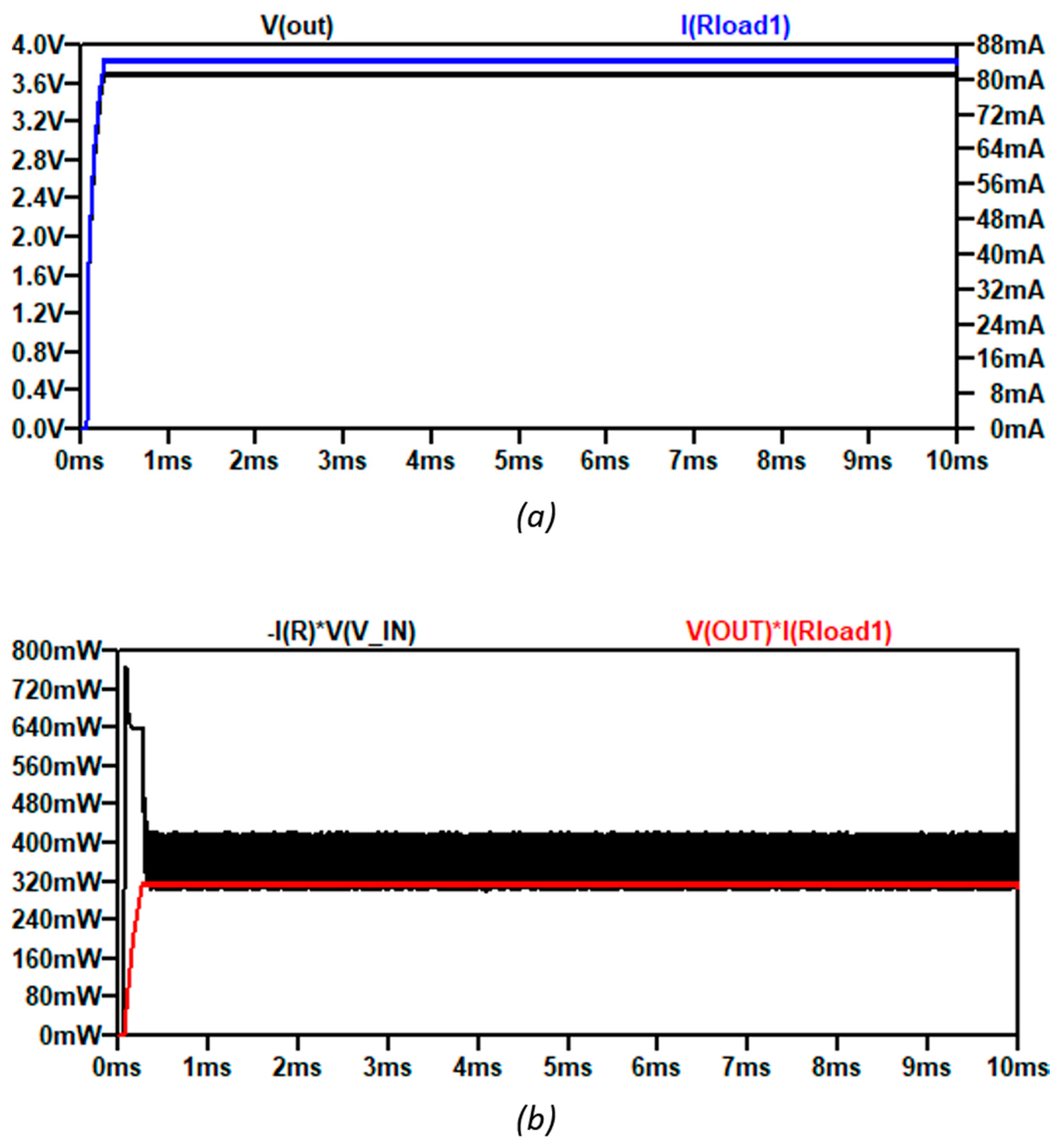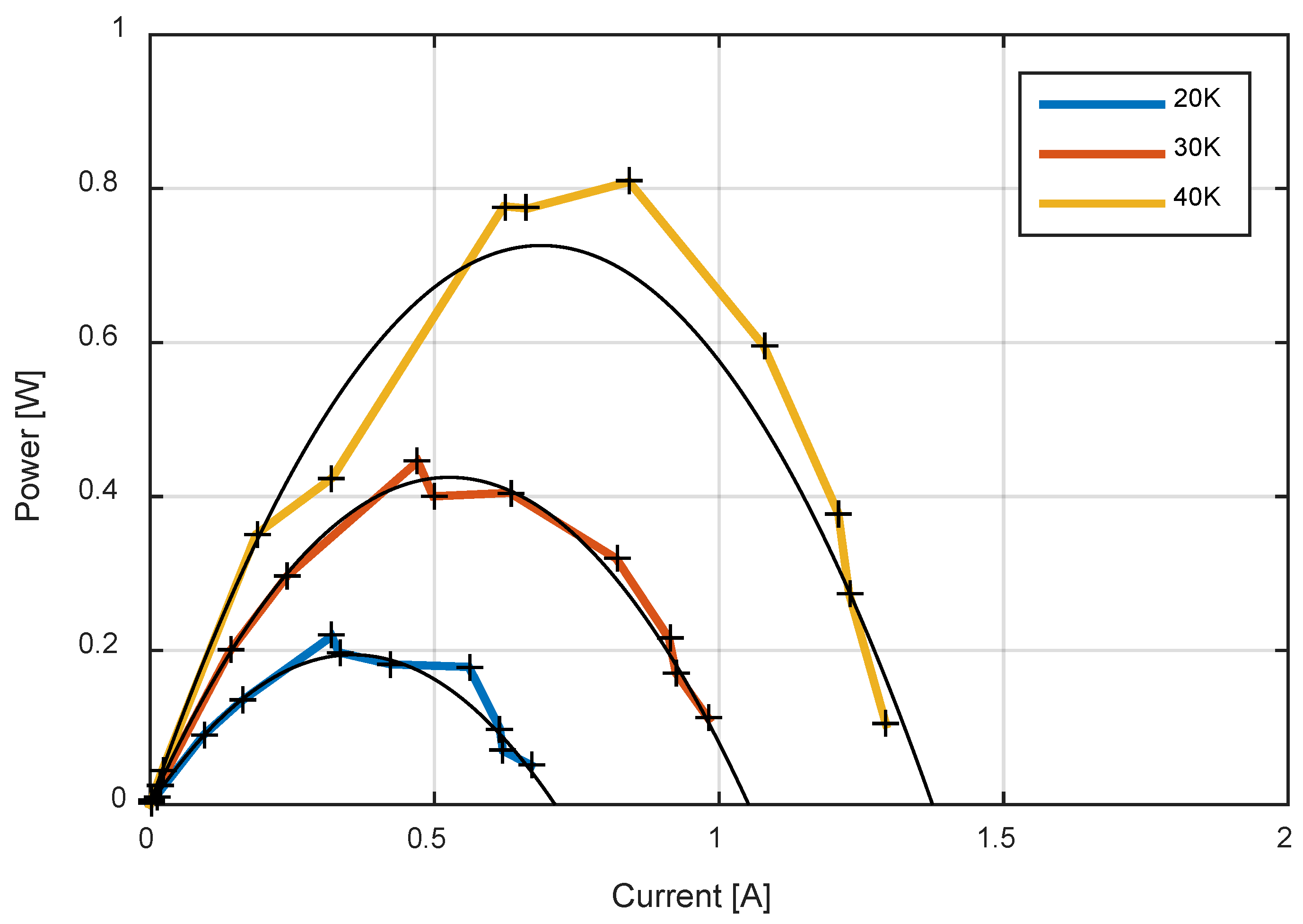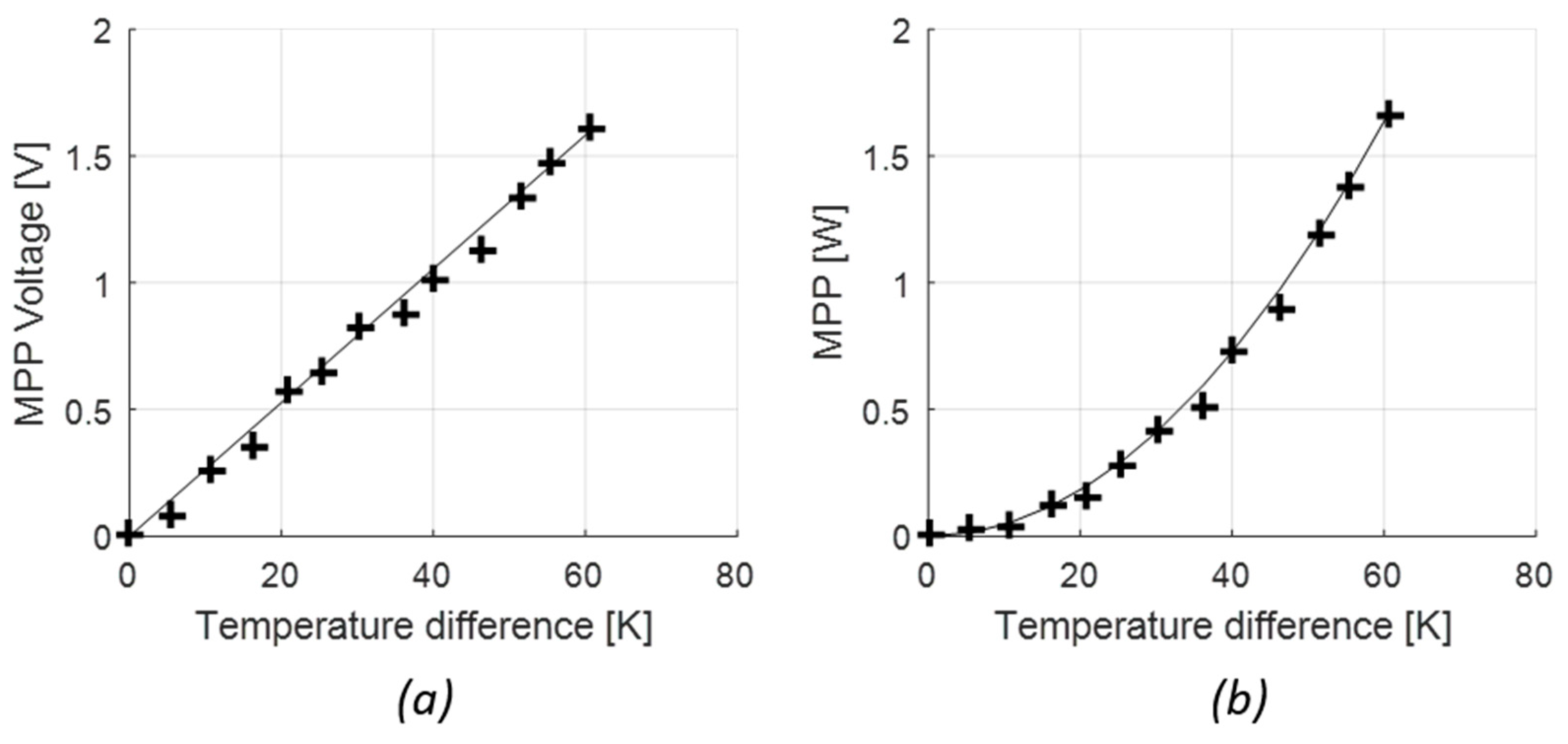1. Introduction
Smart city initiatives are supported by the effort of the Internet of Things (IoT) to improve the quality of life of citizens by gathering information about education, energy, healthcare, public transportation, employment, among others [
1]. With the principle of interconnected people and objects, IoT applications collect the target information from autonomous devices and allow communication among machines, which makes information available on-demand in a centralized system like the Internet. To guarantee a continuous operation, challenges such as low power consumption, low cost, low range of transmission, and ease deployment must be tackled for successful IoT implementation.
The design of low power microcontrollers represents an improvement for minimizing the energy consumption of IoT devices. However, from a Wireless Sensor Network (WSN) point-of-view, the choice of the powering unit is still an issue, since a network can contain hundreds (or thousands) of sensors. The power supply can be a battery, which is simple to implement, but available rechargeable battery technologies have low specific capacity [
2]. Furthermore, the repetitive charging process needs to be as automatic as possible requiring a properly-designed power management circuitry [
3]. Energy Harvesting (EH) techniques are considered a solution for complementary power sources [
4]. For outdoor devices, solar panels (SPs) can be used to provide the required operation power but their availability is restricted only during proper radiation conditions/times. Typically, the SP efficiency is considerably low. The
Journal of Progress in Photovoltaics: Research and Applications reports the advances in photovoltaic research and the improvement of cell efficiency semesterly. According to Version 53 (December 2018), a record of 29.1% was measured for a 1 cm
2 single cell, but the overall efficiency decreases when the cells are connected to build SPs [
5]. Furthermore, solar panel efficiencies are affected by dirt and temperature causing an increase in initial deployment and higher maintenance costs. Thus, the solar resource needs to be combined with energy storage units.
An alternative that is not affected by dirt—and that, unlike the solar panel, takes advantage of the sun in terms of heating—is the Thermoelectric Energy Harvesting (TEH). Since variations in temperature produce electricity using thermoelectric or pyroelectric transducers, TEH can also be proposed as a harvesting scheme using a Thermoelectric Generator (TEG) [
6]. In this case, a TEG converts temperature differences across its plates into electricity [
7,
8].
Table 1 compares different TEH approaches using different heat sources, and presents maximum temperature difference and output power.
Using controlled heaters with adjustable temperature permits to evaluate the potential of TEG as energy harvesters, as presented in [
10], where a maximum output power of 7.3 W is obtained from a large temperature difference. This type of heat source also provides an estimation of the available power when it is used for environmental sensors. Other sources as ambient light, exterior temperature, and hot asphalt are considered. In [
15], a 4-TEG harvester for WSNs is presented. It maintains a temperature gradient of 3 K using ambient temperature as heat source and water as dissipative material. Despite the TEG contains a cold temperature control mechanism, this scheme consists of a DC motor pump that requires an external power source.
Outdoors, solar rays do not achieve higher temperature differences, but arrays can improve the overall output power. In [
19], the authors present an autonomous multi-sensor system for agricultural applications using a TEG excited with the incidence of solar rays. The TEG cold side is attached to an aluminum heatsink which allows obtaining a maximum temperature of 8 K and a maximum TEG voltage of 200 mW. In [
20], the authors propose a prototype that harvests energy from heat using a thermoelectric material. It consists of an array of 12 TEGs connected in both series and parallel. The TEG hot side is exposed directly to the incidence of solar rays, while the cold side is arranged on water, acting as a dissipative material. In this case, the prototype produces an average temperature gradient greater than 15 K. For both arrays, series and parallel, average powers of 1.23 W and 0.43 W are obtained, respectively.
Such low output powers become a challenge for exploring more efficient mechanisms of energy conversion via TEH. Here, the main goal comes with devising a strategy to increase the temperature difference between the TEG plates/sides to obtain enough energy density to power an IoT sensor. Once the temperature difference is addressed, the soiling effect becomes irrelevant for the TEG option with respect to an SP. Elevating the temperature of one of the TEG plates arises the requirement of maintaining the other plate as close as possible to a reference temperature (i.e., ambient) to maximize the temperature gradient. Active cooling mechanisms decrease the overall efficiency due to the extra power required to operate. As a result, passive mechanisms using heat transfer principles are studied as alternatives to achieve temperature control. Taking advantage of their high specific heat capacity, materials such as water, rock or masonry are used as temperature stabilizers, as seen in
Table 1. However, the amount of material required to store energy can be considered high, making them unpractical to size-limited applications. Thus, the use of Phase Change Materials (PCM) can be evaluated. PCMs store and release large amounts of energy compared to sensible heat storage, requiring less mass. For example, in [
21], authors perform an experimental study of the thermal performance of a heat pipe with a PCM for electronic cooling. The cooling module with PCM saves 46% of the fan power consumption. In [
22], an experimental study is carried in heatsinks with and without PCM to evaluate the best configuration for a high-heat electronic-component generation. The results indicate a maximum temperature reduction of 25% with the insertion of PCMs. Regarding TEGs temperature control, in [
23], the authors evaluate the impact of replacing active cooling mechanisms with PCMs to maintain the temperature gradient. Despite the theoretical and simulated results being promising, tests are still developed with water acting as PCM.
With the presented limitations of TEH for aspects such as output power and dissipative material to maintain the temperature difference, this article proposes an alternative to exploit solar rays as heat source guaranteeing a desired temperature gradient by using PCM as a thermal stabilizer. For this particular development, the solar incident radiation is converted into heat using a metal surface that acts as a concentration element. A commercial PCM is tested as a cooling element to maintain the temperature in the cold plate for proper energy generation. First, a commercial TEG equivalent electrical model is proposed and validated. Then, an energy budget is established to estimate operation time, resulting in a series of specs that allow the development and validation of a complete IoT prototype. Tests of the prototype allow concluding about operation and performance metrics.
4. Conclusions
This paper has shown a complete energy harvesting system with passive cooling that supports the operation of a secondary battery to power up outdoor sensors. The energy harvesting strategy employs the solar resource but increases the conversion efficiency, reducing adverse effects such as heating and soiling exhibited by solar panels. Thus, the thermal gradient is preferred over the photovoltaic effect. The complete harvesting system complements the TEG selected as a transducer with all the required blocks to properly manage battery cycles that maximize lifetime by ensuring a DoD lower than 50%.
Characterizing a TEG is important to determine the associated electric potential and for simulation purposes. Initially, a first-order transducer model has been proposed based on the associated basic electrical parameters. It is shown that 407.3 mW output power and 2.4438 Wh energy are obtained using SPICE-based simulations helping the design process.
The key aspect for proper use of thermoelectric harvesting is maximizing the temperature gradient that experiences a TEG given certain environmental conditions. For the case of this work, the City of Barranquilla counts with ample solar resource; therefore, a metal plate is attached to the TEG hot-plate for proper thermal conduction, and a dissipative material is required to keep the initial TEG cold-side temperature. The PCM becomes the ideal choice as dissipative material when selected so that the material changes its phase at a temperature as close as possible to the ambient temperature. Thus, while the metal plate continues to heat up, the cold side temperature is maintained, keeping the targeted temperature gradient and with that the desired efficiency.
To verify its advantage for cooling, the PCM is compared to a heatsink. It is found that the PCM reaches an average temperature gradient of 33.1 K, while the heatsink only gets an average temperature gradient of 31.05 K. This represents an improvement of 2.05 K, which corresponds to an average of 106 mW more power. For the selected operating hours this produces about 424 mWh more or a gain of 14.37% in the total harvested energy.
In this work, a complete outdoor IoT sensor is built as a testbench to demonstrate proper energy supply from a TEH. The prototype contains a low-power microcontroller and environmental sensors that measure ambient temperature and relative humidity, and is equipped with a low-power radio to report the variables to a central node/gateway. It is found that employing the TEG with the passive cooling strategy, the TEH has enough power to operate the microcontroller, sensors, and radio, that demand average energy of 1.032 Wh during the day. Furthermore, it is demonstrated that the prototype supplies sufficient energy for continuous operation even during times with no solar resource through an on-board 2.035 Wh battery. Such a battery can be recharged once the solar radiation is available without compromising sensor operation.
Corroborating that there is enough energy for sensor autonomy is determined mainly in the case of days with solar radiation below the estimated average for the geographical zone considered. Thus, the designers are considering the worst-case scenario.
Power electronics have proved their contribution to adequate power into the proper voltage and current ranges defined by the sensor circuitry. An 80.81% average efficiency DC-DC converter is selected as a power management unit.
Last, the authors have been able to demonstrate the efficiency claim of solar radiation conversion over SP efficiencies. Statistically, it is found that the efficiency of the prototype surpasses 20% with 95% confidence in solar-radiation Ranges V and VI. Furthermore, the TEH strategy does not suffer from efficiency reductions due to solar panel heating and/or soiling. It has been shown that with a TEH area of only 16 cm2, a minimum of 2.45 Wh can be easily harvested over a six-hour time span, and such an energy level is enough for low-power oriented sensors.

